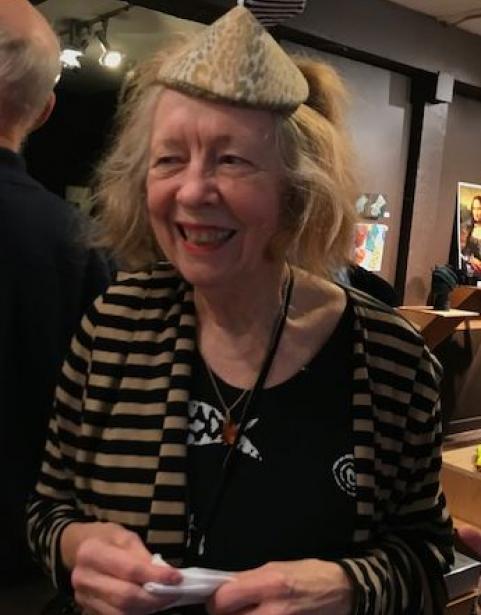You can more fully appreciate Lynn, her artworks, and her strong presence in the art community, when you know more about her history. Raised in the cotton belt in New Mexico, by a single mother of five who worked as a waitress, you can imagine the lack of money for toys. From an early age she collected throw-aways in order to create shoes, wearables, and small sculptures. These activities were her lifeblood.
College was never a thought, but because her mother was independent, Lynn had a good role model in terms of 'taking care of business'. Lynn’s formal education was limited to a High School degree and a welding class at Pratt Fine Art Center.
She is independent, a risk-taker, self-taught, and self-actualized. She’s made her living as an artist for over forty years- most of that during her residency in Seattle. In an attempt at full disclosure it should be revealed that she did take a two-day job passing out juice samples in a supermarket in 1992.
Her artwork is a lifetime preoccupation and she simply cannot live without making things. The current assemblage sculptural work stems from ideas or phrases, usually involving social or political observation. The excitement comes in selecting the right materials: maybe concrete, household objects, plastic, shredded newspaper, coffee beans – whatever will express the story in a clever, shapely or poignant way.
The excitement comes in selecting the right materials: maybe concrete, household objects, plastic, shredded newspaper, coffee beans – whatever will express the story in a clever, shapely or poignant way.
Besides creating ‘things’ she has instigated a number of community performance art events since moving from Seattle to Tacoma in 2001.
She received the Washington State Governor’s Artist of the year award in 2017.
Manufactured plastics, so available, so adaptable, so colorful, and so plentiful, are also the bane of our existences.
As public concern about plastic pollution rises, consumers are reaching for alternative materials. While we fret over images of oceanic garbage gyres, the fossil fuel and petrochemical industries are pouring billions of dollars into new plants intended to make millions more tons of plastic than they now pump out.
The impact goes beyond the waste problem that is the focus of public concern. Although plastic is often seen as a separate issue from climate change, both its production and afterlife are in fact major sources of greenhouse gas emissions.
Maybe it’s a bit of a contradiction for me to use plastics in my work to illustrate the many problems of single use plastic. One driving motivation for me is the relatively new information that scientists have found plastic molecules within our body chemistry. It’s surmised that we cannot burn calories as a result –maybe accounting for our increase in obese populations? Could this be why it's so hard to lose weight? . . .Plastics are so invasive we've incorporated them into our bodies. . .
Why are so many of my figures round? Scientists have found plastic molecules within our body chemistry.

